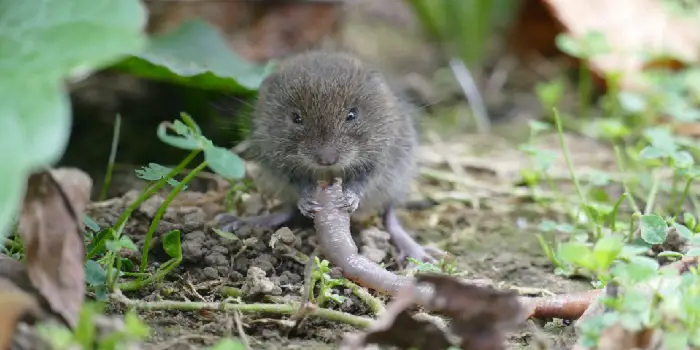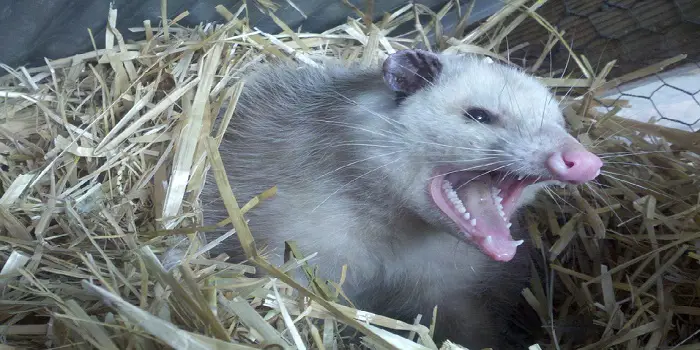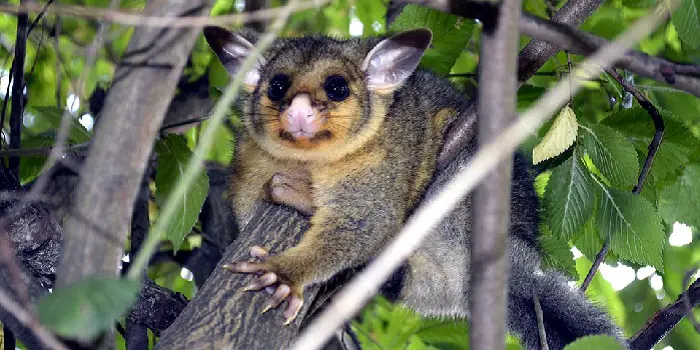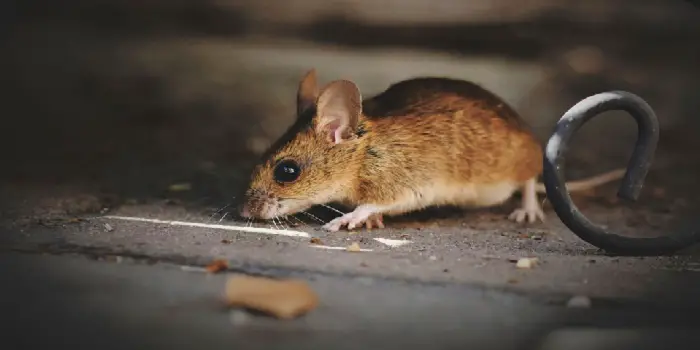
No one likes unwanted animals on their property.
However, sometimes that is out of your control, and there may be some animals that have made a home somewhere in your yard.
Don’t worry; you can get rid of them easily.
Many people in the U.S celebrate Groundhog Day but don’t like these mammals to be anywhere near their property.
If you are looking to trap a groundhog (also called woodchuck) as well, then you are in the right place.
Here I have prepared a complete guide to successfully trapping them. So check this out before you try to trap or get rid of these critters.
What is a Woodchuck?
Let’s start with the basics.
Before you learn how to trap these mammals, you need to know what they like, what they do, and what they are.
Woodchucks are mammals of the squirrel family and weigh between ten to thirteen pounds once fully grown.
They are also known as groundhogs; you will only find them in North America.
The most interesting fact about these little mammals is that during the winter they eat an entire pound of food or more to get themselves ready for hibernation.
Their mating rituals are also unique.
When they want to mate, they will visit the dens of female groundhogs and introduce themselves.
After visiting each, they will decide who they like the most and mate with them.
These creatures live in big homes.
Their burrows can go anywhere from 6 to 66 feet in length.
These burrows also have a variety of exit points from where the groundhogs can easily exit.
This is why it may be hard to sometimes trap this animal, as it can flee its home whenever it feels under threat.
What Do They Eat?
Groundhogs are herbivores.
Their diet consists of plants, flowers, and garden vegetables.
They will only resort to eating small insects if there is no other food source available to them.
They also love to snack on the bark of trees, peas, dandelions, apples, and carrots.
So, if you have any of these growing in your garden then they may attract groundhogs.
Are They Dangerous?
These little mammals have earned a reputation for being ferocious when they are being trained.
However, in reality, groundhogs hate confrontation and avoid it as much as possible.
So, if there is a danger, then it is highly likely that they will just run away because they don’t enjoy confrontation.
In short, they are not dangerous to humans because they will just run away if they see one coming near them.
On the other hand, groundhogs can be a danger to your pets.
This is because of their sharp teeth.
However, they will avoid confrontation even with pets and most likely run away.
If a groundhog is living in your yard and your pets also roam around there frequently, then you should always keep an eye on them.
This is because if they start digging near its burrow then the groundhog will feel threatened and may attack your pet.
There is a possibility that they carry rabies, so the transmission of this disease is possible, but this is a rare occurrence, so you don’t need to worry too much about it.
How to Trap a Woodchuck?
Woodchucks are not that intelligent. They are not as sly as raccoons and rats, so it is easy to trap them.
You will need bait and trap to lure the groundhog and then get rid of it.
Firstly, you will have to choose a cage to trap the groundhog in.
Make sure that the cage is made of a strong material such as a sturdy wire mesh so that the groundhog can’t chew through it.
This will allow the mammal to stay trapped while you safely take it somewhere else.
Next, you should place this cage near the burrow of the groundhog and keep delicious bait for the groundhog inside it.
Once the groundhog is lured into the cage and starts chewing on the bait, it is time to close the cage and capture the groundhog.
After that, you should take it to a local wildlife removal authority so that they can release the groundhog into a safe habitat.
This is how easy it is to trap a groundhog and then take it to the relevant authorities.
However, your most important decision is choosing the right trap so that it cannot cut through the mesh/wires using its large front teeth.
What Kind of Cage to Choose?
You may want to go with a simple metal cage – such as made by Havahart, HomGarden, Smartxchoices, or OxGord.
These look like the most viable and strong options for capturing groundhogs successfully.
However, you should keep in mind a few things before you pick out a cage for trapping:
- The strength of the metal (and wire mesh) of the trap should be high so the groundhog can’t chew and make its way out
- You need to choose the right cage size. A good rule of thumb is to go for a cage that has at least 20 – 25 inches of space, as groundhogs are big.
- The cage should have one or two doors with handles outside so you can easily move it from one place to another.
Remember that you shouldn’t buy any trap or cage that will injure or hurt the groundhogs.
This is because many states have a law that states you can’t kill a groundhog.
So, before you go on to buy a hurtful trap, you should read the law of your state.
Locating the Trap
An ideal location for the groundhog trap is around six feet from the entry hole.
Locate it under a tree or in a bush.
Consider installing multiple traps if there is more than one entry point.
This will help you catch all the animals relatively fast.
Also, you should wash the trap with water which will remove any human scent and prevent the animal from becoming careful.
What Type of Bait to Choose for Them?
There are not many places that produce special bait for groundhogs.
This is because they love fresh vegetables and fruits that can be easily used to lure the animal inside the cage.
So, you will not have to go through the hassle of choosing and buying bait from a special store.
The best option for groundhog bait is to use apple slices and place them near their burrow.
This is because apples have a strong smell that a groundhog can easily detect from far.
Once it smells this fruit, it will come and get trapped in no time.
However, other options work just as well.
A juicy cantaloupe, peas, raspberries, alfalfa sprouts, broccoli, clover, corn, and dandelions will work the same way.
It is the best way to get to a groundhog’s stomach and make them come out of their burrows so you can trap them.
If you live where temperatures are warm, you will have to be even more careful with your bait.
This is because a hot temperature can cause the baits to wilt in the heat.
This will defeat the purpose of your bait as the groundhog will not be able to detect its smell.
Other Alternative Ways to Get Rid of Groundhogs
Of course, there are other ways to get rid of groundhogs.
Here are the three other ways you can get rid of groundhogs instead of trapping them in a cage:
#1. Fumigation
You can purchase a fumigant and use it on the burrows of the groundhogs.
These toxic gases may either drive away these creatures or kill them.
This is why before you use this method, you should learn whether your state allows you to kill these creatures or not.
#2. Natural Deterrent
A groundhog repellent aims to irritate its nose and eyes.
They come in a liquid form and can be applied around places that a groundhog might visit.
For example, you can apply it around the pots of your flowers and plants so that the groundhog doesn’t ruin them.
Some of the most common ones that are popular in the market include:
- Rabbit & Groundhog OUT Repellent
- Exterminators Choice Small Rodent Defense Spray
- I Must Garden Animal Repellent Granular Formula
#3. Electronic Repellents
Electronic repellents (including water sprayers, sound machines, solar-powered spikes, etc.) are placed to effectively drive away groundhogs from your property.
Most of these work on the premise of motion sensors, and at times a groundhog is found close to your yard.
These devices will activate sprinklers to spray water everywhere so that the groundhog can be driven away from your property automatically.
Although it is effective, you need to find a good repellent that works well for a long time.
How Much Does It Cost to Have Groundhogs Removed?
At times groundhogs can be hard to remove, especially when there are too many of them present under the ground in your yard.
In these cases, you will need to call for professional help.
Although the costs of groundhog extermination may fall within the $150 to $200 mark for most homeowners, the exact price will be determined based on many different factors.
Many times, the services will be categorized under the wildlife & animal control specialist, which may incur a fee in the range of $30 to $40 per hour.
Additional groundhog extermination costs may apply (around $0.50 per mile) if your location is far away from their usual service areas.
Sometimes, the team of exterminators may require multiple visits to completely eliminate the problem.
Depending on the number of visits and hours required, your overall bill will significantly increase.
Please be aware that all these costs do not include any cost of repairs that may be needed if there is major damage done in your yard.
Based on the damages (such as lawn damage, foundation damage, irrigation system damage, and damage to your home structure), your costs for groundhog extermination can go significantly higher.
Groundhogs are good at chewing wiring and plumbing systems, so if you need to have the wiring redone along with other repairs, it may cost anywhere from $1,000 to $8,000.
Other Related Questions:
What does a groundhog tunnel look like?
Groundhog dens or tunnels are easy to find if you have these animals around your place.
Groundhog tunnels are usually crescent-shaped mounds of dirt that will look much like those of moles.
These tunnels can be several inches wide and several feet long.
Mostly surrounded by dirt, the average circumference of the entrance of the tunnel can be between 10-12 inches.
Some of these tunnels are connected to their main dens, while some of them may only be built for finding a food source.
The length of the burrow systems may extend between 50 to 100 feet and are 5 to 6 feet below the surface.
Most of these will also have multiple chambers, entrances, and exits.
What smell do groundhogs hate the most?
Groundhogs simply don’t like strong scents like garlic, red pepper, spicy foods, talcum powder, and even human urine.
For this reason, can use these smells around the groundhog tunnels and holes as a highly effective repellent.
Just spray/pour a bit of them at the entrance to the burrow. Try for a few days, and you can naturally keep groundhogs away.
Can you use poison baits or gas bombs on groundhogs?
Many people prefer using poison bait to get rid of groundhogs.
These are simple granules of lethal poison that can be sprinkled outside the holes and tunnels where groundhogs will eat them.
The only problem with using these poison baits is it’s difficult to locate the dead groundhog carcass, which can sometimes be present in the burrow and attract more pest animals.
Plus, these baits are usually toxic, which means you should not use them around your pets and kids.
If any of them eats it, take them to the hospital immediately.
- Depending on the kind of active ingredient it has, the guidelines may tell you to force vomiting.
- In order to prevent a trip to the hospital, make sure you place the bait where your kids and pets can’t reach, probably in a locked drawer or closet.
- It’s best to fence off the area if you can. Or keep your pets on a leash away from the treated location and ensure your kids don’t go there too.
Another option that some people will choose is gas bombs.
IMO, these are cost-effective (compared to the cost of a trap) but can be difficult to use.
Plus, these toxic gases can also kill any other animals that are present in your yard.
The Conclusion
Groundhogs are easy to trap; all you need to do to trap them is follow these steps.
Any of the baits stated above, such as apples, cantaloupes, etc., can be a great way to lure out the groundhog and then trap it inside the cage.
Once you use them, you will catch a groundhog on your property in no time.
Always remember to protect yourself when trapping an animal and wear proper equipment such as gloves so that you don’t get your hands dirty.
Also, keep in mind that it is not a necessity to kill the groundhogs anyway.
They hate confrontation, and they can easily be trapped even without bait.
So, just take them to the relevant animal authorities, and they will take care of these little creatures.
Share the post "How to Trap a Woodchuck/Groundhog – What Bait to Use?"

Welcome to ProShieldPest.com. I am Tina Jones. I have been working as a pest removal professional in Winslow, Arizona lately. At present, I love to spend my time with my family as a retiree.
Here I share all my knowledge and experiences to help people understand better how they can stop pests at their homes without actually killing them. Hopefully, the information you will find here will help in safeguarding your home! You can check more about me here.




